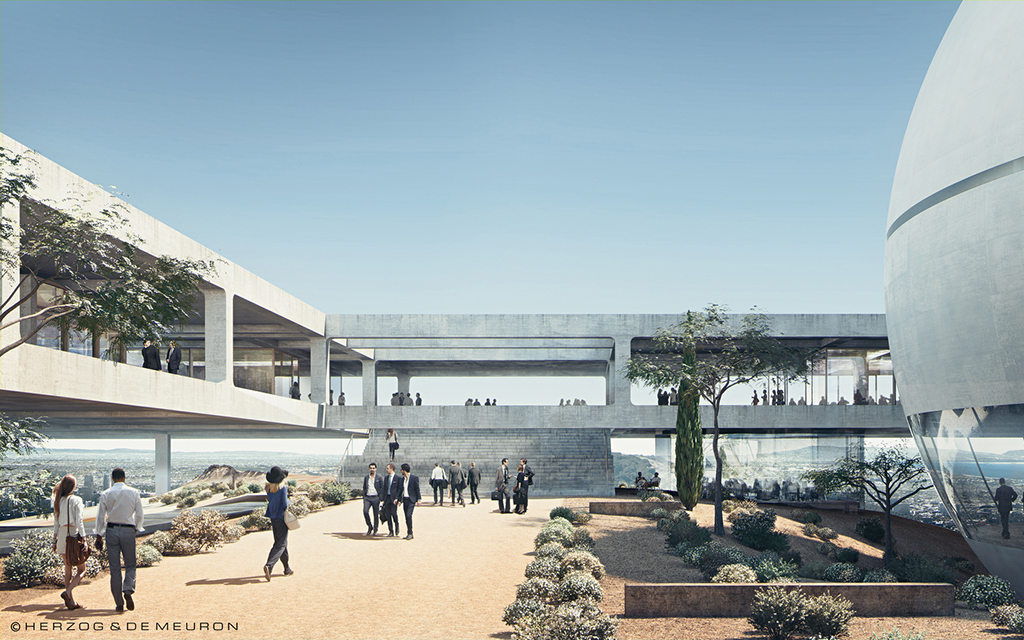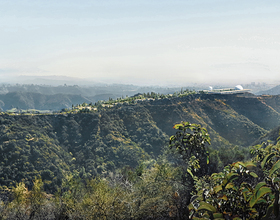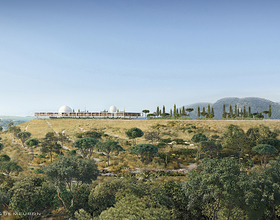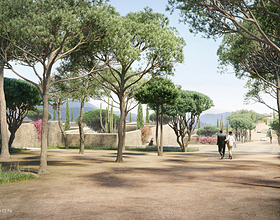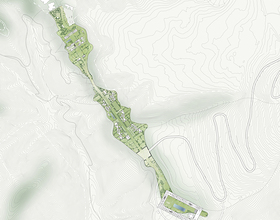BERGGRUEN INSTITUTE
-
Founded in 2010, the mission of the Berggruen Institute is to study and apply new ideas to the workings of social, economic, and political institutions. The Institute’s programs represent various disciplines, largely from the humanities and social sciences, most importantly philosophy, political theory, political science, law, anthropology, and linguistics. The Institute funds scholars, organizes academic workshops, and supports lecture series. These activities currently take place on campuses around the world.
In May 2016, the Berggruen Institute announced the decision to consolidate its activities in a new campus in Los Angeles, at a site in the eastern portion of the Santa Monica Mountains near Topanga Canyon State Park, in recognition of the forward-looking, entrepreneurial spirit and profound connection to the natural world that are ingrained in Southern California.
The Berggruen Institute requires an inspirational setting for research and study, a framework which fosters the exchange of ideas and knowledge and provides the opportunity to live in a shared environment. Spaces for individual study and venues for seminars, symposiums, and workshops are combined with living quarters for fellows, academics, and other thought leaders.
With this diverse program in mind, the Berggruen Institute has acquired a significant 450 acre plot of land in the Santa Monica Mountains above the City of Los Angeles.
The site is largely defined by the pronounced topography of two long mountain ridges that flank a steep canyon with native Southern California vegetation.
In the larger context of Los Angeles, the site lies within a corridor of cultural and academic institutions including the Getty Center, Mount St. Mary’s University, the Skirball Cultural Center, and the American Jewish University.
The Berggruen Institute is a landscape vision as much as it is an architectural project. Crucially, to minimize its impact, the project will be built where feasible only on land that has already been modified. The eastern ridge will be transformed into an elongated park—a gardened plinth, surrounded by a retaining wall and clearly distinguished from the dry, untended vegetation around it. The gardens are self-sustaining; drought-resistant vegetation is coupled with water collection, cleaning, and re-use.
The linear park will house three salient features of the Institute campus: the Institute Building, the Scholar Village, and the Chairman’s Residence.
Half-sunken earthen walls structure the ridge, becoming inhabitable at the Scholar Village. Fellows with families as well as short-term visiting scholars live here in single-story courtyard buildings. From a distance the village disappears from view within the gardened plinth. Beyond a narrow saddle and as a terminus to the campus, the Chairman’s Residence is situated north of the Scholar Village in a garden of its own. Like the Scholar Village, the house consists of inhabitable earthen walls beneath a slender, deeply cantilevered roof.
The Institute Building on the opposite, southern end of the ridge is a rectangular concrete frame supported by just a few elements so that it appears to be hovering above the steep topography.
Two spheres complement the rectangular frame of the Institute: the smaller one is a water reservoir, the larger one houses the lecture hall.
The spheres both physically and symbolically represent the socio-cultural and ecological ambitions of the Institute
Photo credits: Herzog & de Meuron.
Countries: USA
Categories:
Designer:
Status: WORK IN PROGRESS
Beginning of Construction: 2017
Completion Date: 2023
1869 Projects

